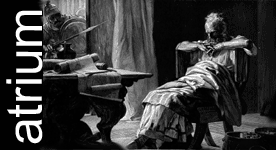From PressTV:
Geological surveys in the south of Iran have revealed rectangular formations inspired by Greek architecture dating to the Sassanid era.
Archeologists say the structures located in Fars Province are part of the urban planning of the ancient Achaemenid city of Istakhr during the Sassanid period (226-651 CE).
“The design is loaned from Hippodamus' style of urban planning during a series of armed conflicts with Persia's great rival to the west, the Roman Empire,” said Ali Asadi, archeologist and expert on the archeology of Istakhr.
“The wars during the first two Sassanid kings, Ardashir I (206-241 CE) and Shapur I (241-272 CE), brought Roman slaves to the country. The Greek architecture penetrated Iran through the work of the slaves,” Asadi added.
Istakhr was once the capital of the Sassanid Empire but today only the archaeological sites of the city remain. The ancient city once contained the original Avesta before it was burned by Alexander of Macedonia.
Hippodamus (498 BC - 408 BC) was an ancient Greek architect and urban planner famous for his designs of repeated square geometric shapes.
